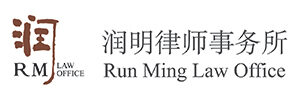On 11 December 2001, China formally entered the World Trade Organization. To satisfy the requirements of the Agreement on Trade-Related Aspects of Intellectual Property Rights, in the same month it amended the PRC Trademark Law, one of the important provisions of which was the implementation of judicial examinations of trademark reviews.
In administrative lawsuits relating to trademark review and adjudication, the adduction of evidence and the recognition of such evidence by courts are of great importance in determining whether administrative acts of the Trademark Review and Adjudication Board (TRAB) are lawful and in safeguarding the lawful rights and interests of plaintiffs and third parties.
Burden of proof

Executive Partner
Run Ming Law Office
In contrast to civil actions and criminal actions, the PRC Administrative Procedure Law and the Supreme People’s Court Interpretations on Several Issues Concerning the Implementation of the PRC Administrative Procedure Law (the Interpretations) set forth the basic principle that in administrative actions the defendant bears the main burden of proof. In an administrative action case relating to trademark review and adjudication, the TRAB, as the defendant, bears the burden of proving the lawfulness of its administrative acts and is required to provide the exhibits and the normative documents on the basis of which it rendered its trade mark review and adjudication decision or ruling.
However, this does not mean that the plaintiff should be passive. Judicial interpretations, such as the Interpretations or the Several Issues Concerning Evidence in Administrative Actions Regulations (the Regulations) have improved the situation concerning the burden of proof of plaintiffs.
In addition to having to prove that his institution of an action complies with the statutory conditions, a plaintiff may also provide evidence substantiating that the decision or ruling rendered by the defendant, the TRAB, is in violation of the law, e.g. evidence showing that the TRAB violated the statutory procedure in rendering its decision or ruling. Even if the evidence provided by the plaintiff does not hold up, this does not exempt the TRAB from having to prove the lawfulness of the administrative act that is the subject of the suit. Accordingly, the plaintiff in a trademark administrative action should fully use his right to adduce evidence.
A question of evidence

Associate
Run Ming Law Office
In administrative actions relating to trade mark review and adjudication, the plaintiff has the right to submit evidence to the court which may not only include evidence that was submitted to the Board at the review and adjudication stage, but also new evidence that was not presented then.
There are different opinions as to whether a court should accept evidence submitted by the plaintiff that was not presented during the review and adjudication procedure.
The Regulations specify that the court will not, in general, accept evidence that the plaintiff refused to provide in an administrative procedure when required to do so if such evidence is provided during the litigation procedure.
Some judges hold that the court should examine only the evidence and grounds based on which the TRAB rendered its ruling and that supplementary evidence provided by the plaintiff during the administrative action should not serve as a basis for examining whether the Board acted within the law. They therefore lean towards the position that courts should not accept any evidence that was not presented during the administrative action. For example, in the Heineken vs. T.C. Tobacco “Xili” trade mark case, the appellate court, Beijing Municipal Higher People’s Court, held that evidence that Heineken presented in the trial at first instance but had not provided during the trade mark opposition re-examination should not be accepted in the case.
However, other judges hold that the intent of the provision is to prevent plaintiffs from disdaining administrative procedures, thereby causing them to become worthless, and that its intent does not lie in requiring courts to refuse all evidence not submitted by plaintiffs during administrative actions.
For example, Judge Kong Xiangjun, head of the intellectual property division of the Supreme People’s Court, pointed out that courts, “in general”, do not accept evidence that was not presented during an administrative procedure but this does not mean that they refuse to accept all such evidence. General non-acceptance was targeted at evidence the provision of which was originally refused. In general, courts should accept evidence that the plaintiff had not refused to provide without just cause or had not truthfully provided and was providing during the litigation procedure.
Examine the reason why
The judge explained that evidence that was not presented in the administrative procedure due to a misunderstanding, evidence that could not be submitted on time due to objective obstacles or new evidence that was only discovered during the litigation could be submitted during the litigation procedure. The court should examine whether the reason why the evidence was not presented during the administrative procedure was legitimate.
Furthermore, if, after a court has upheld the ruling of a TRAB, the plaintiff can obtain relief by instituting a new administrative procedure on the basis of new facts and/or new grounds, the court will, in general, adopt a strict stance in ruling out the new evidence. For example, where a plaintiff has previously submitted an application challenging a registered trade mark and still has the right to submit such an application on the basis of new evidence and/or new grounds, the court will adopt a strict stance in recognizing the new evidence.
We recommend that if a plaintiff has evidence that he did not present during the review and adjudication stage, he should, nonetheless, submit it at the litigation stage and additionally provide to the court a reasonable explanation as to why he did not present such evidence during the administrative stage.
Wang Yadong is executive partner of Run Ming Law Office.
Lu Lei is an associate at Run Ming Law Office.

Suite 1806, NCI Tower,
12A Jianguomenwai Avenue,
Chaoyang District, Beijing, China
Postal code: 100022
Tel: +8610 65693511
Fax: +8610 65693512/13
www.runminglaw.com
E-mail: wangyd@runminglaw.com
lul@runminglaw.com





















